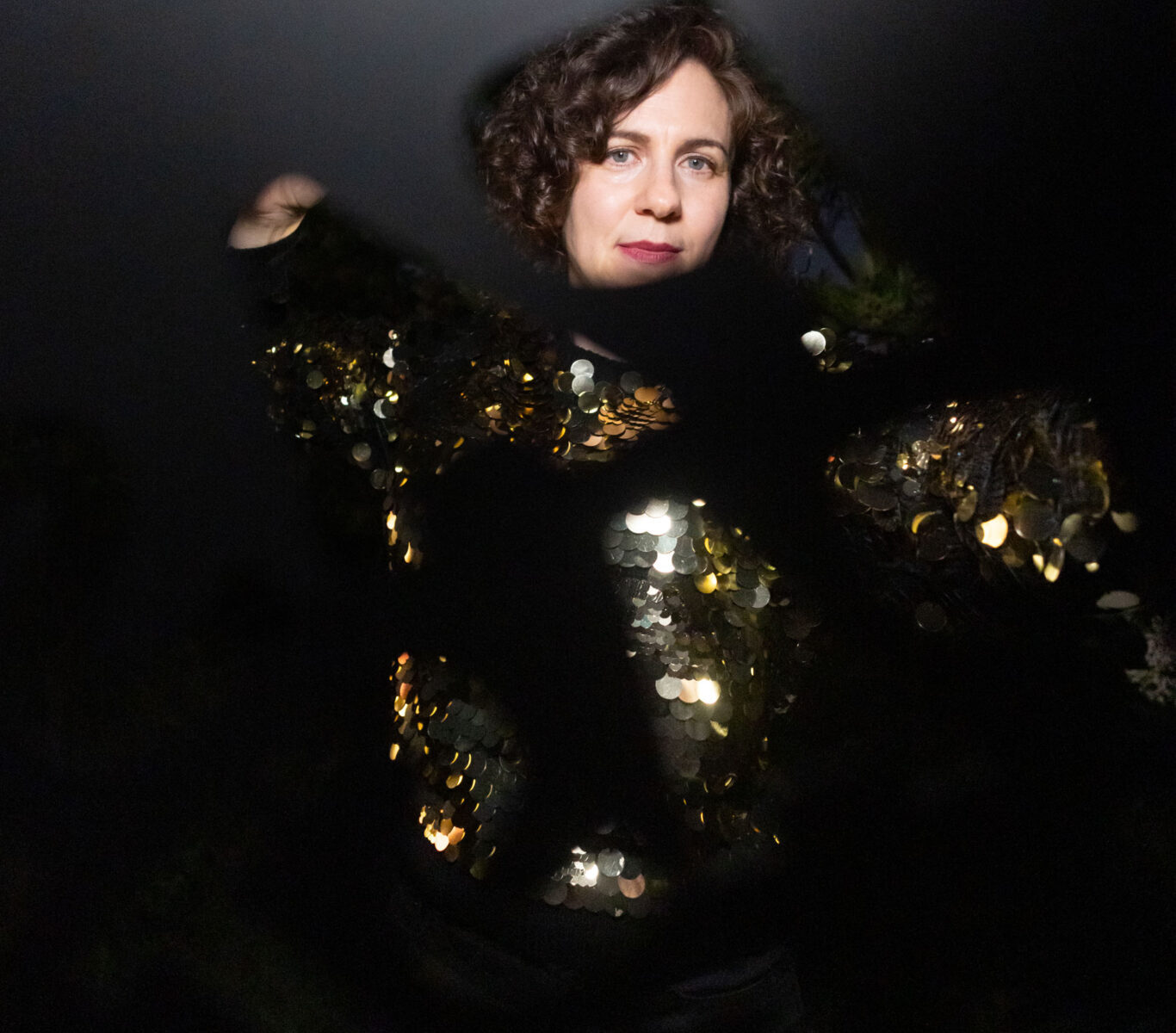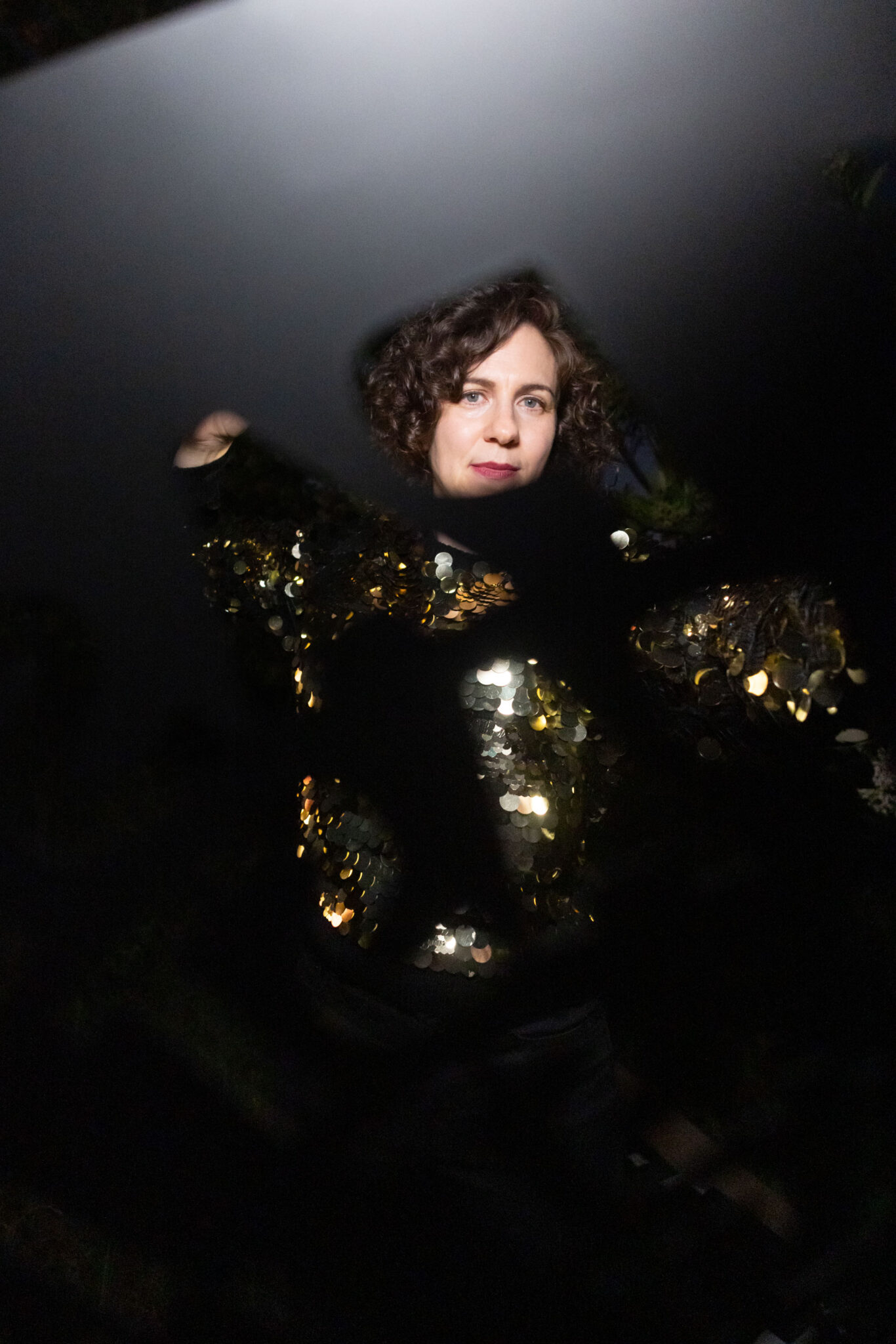
Elana Mann is an artist and activist who explores the power of the collective voice, the embodiment of language, and deafness. Mann is Hard of Hearing and for the past twenty years she has researched the act of listening and everyday communication through sculpture, sound, works on paper, and public performances. Mann’s rattles, trumpets, and other instruments are tools that galvanize the sonic energy of her work; together, they make a synergistic roar that embodies the voices of those who strive for social and environmental justice. She has participated in exhibitions and screenings at the Museum of Contemporary Art, La Jolla, the Orange County Museum of Art, the Hirshhorn Museum, and the Museum of Art and History, Lancaster, among many others. Mann’s awards include an International Artist-In-Residence at Artpace San Antonio, the California Community Foundation Artist Fellowship, and the Cali Catalyst award from the Center for Cultural Innovation.
Q: Artistic Challenges: What’s the biggest challenge you’ve faced in a project, and how did you overcome it?
A: Ha! So many challenges over the years that it is hard to choose. Here’s one: in 2017, I found this incredible home-made folk musical instrument that was used in protests in Claremont, CA during the 1970s. It was called the Mega Kazoo Horn; it’s ten feet long and has six siren whistles attached to a long central horn. I wanted to create an homage to this piece and use it in present-day street protests and performances. I started to work on it in late 2019/early 2020 after having my second child. Then the COVID-19 pandemic hit. I isolated myself at home with my newborn and my five-year-old while my husband worked—it was hard for me to go to the bathroom, let alone the studio. On top of that, it dawned on me that this sculpture, made for six people to breathe into simultaneously, had become a COVID-19 super spreader. And the only people protesting in the spring of 2020 were those who didn’t want to be vaccinated or masked. I thought: This is the worst idea for an artwork of all time, and this sculpture will never be finished.
But then the summer of racial reckoning happened. Masses of people risked their lives to protest for racial justice, and I began to imagine that the piece could be completed and used someday. I finished the sculpture during a residency at Artpace, San Antonio in late fall 2020 and called it Our Work is Never Done (Unfinished Business). It took another three years before I felt comfortable using the piece in a performance, and I finally premiered its sound in January 2023 with Hope is a Hammer at Human Resources, Los Angeles, in collaboration with composer and musician Sharon Chohi Kim.
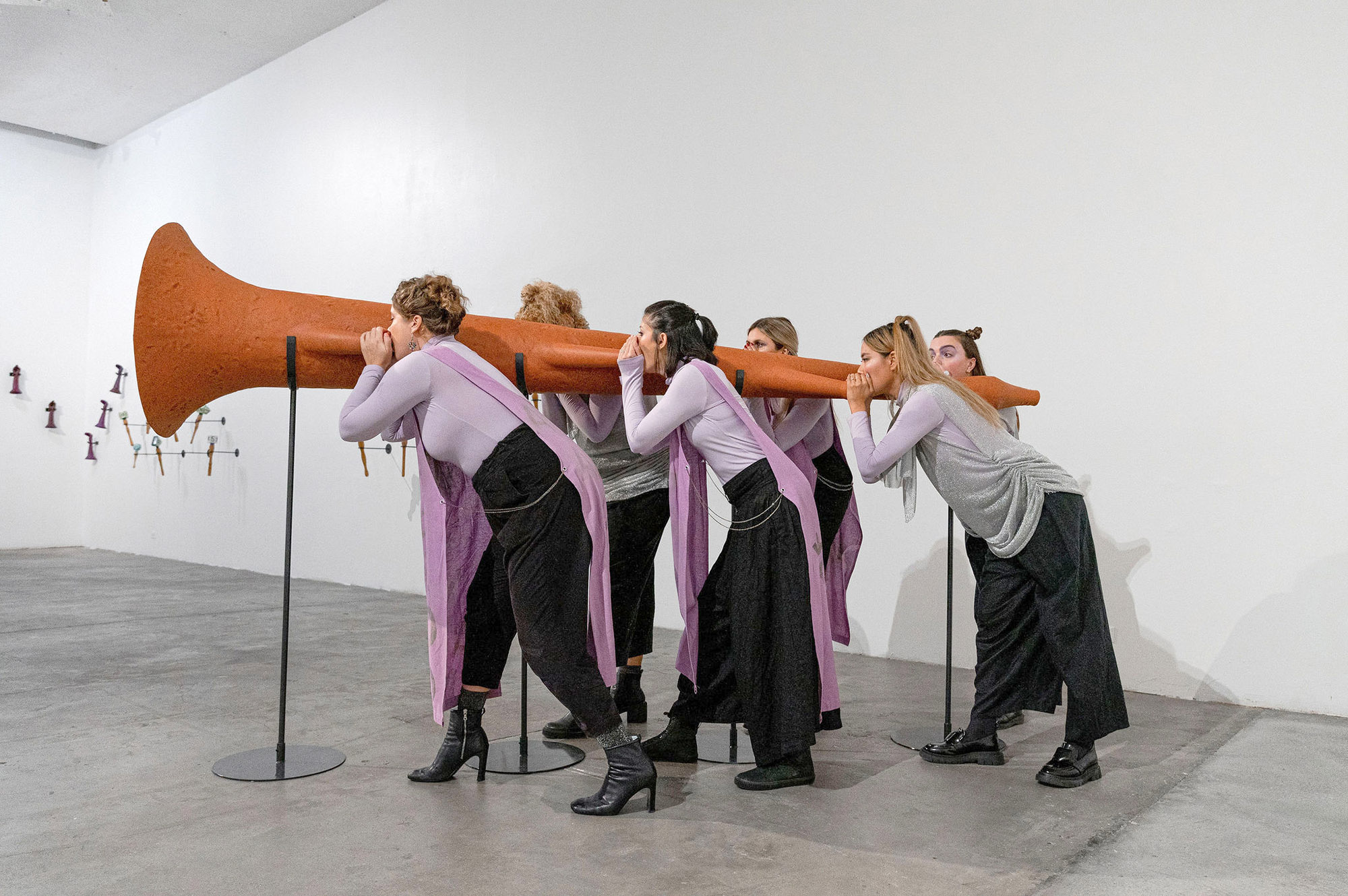
Q: Influential Experiences: Is there a particular experience that significantly shaped your recent artistic direction?
A: I learned this summer that I was born Hard of Hearing—after twenty years of making art about the act of listening, the collective voice, and embodied language. I laughed and cried at the same time at the irony of it all. Clearly, my subconscious knew about my disability before my conscious mind did. It’s very strange to learn, at the age of forty-three, that you’ve had a disability your whole life and never confronted it. This new self-awareness shook me at first. I had built up so many ways to compensate for and cover up my hearing loss, and my internalized ableism was strong. But after I got over the initial shock, I was elated. Suddenly, I started to understand my life and my art practice in profound ways, and I could see that my artwork has been dealing with disability and deafness for years. I even have a large collection of antique hearing aids that I made into an artwork in 2014 called Having a Choice and Having a Voice, Having a Voice and Having a Choice. I am still in this process; it has only been four months since I was diagnosed with congenital hearing loss. I am so excited to see how this self-knowledge will shape my work moving forward.

Q?: Unexpected Mediums: What’s the most unconventional material or medium you’ve used in your art? How important are these media in your work?
A: My material curiosity is endless—last night I was making letters out of cooked spaghetti for a new text piece. I was trained as a sculptor, so mediums and materials are critical to my work. In 2019, I started making ceramic rattles for protest and ritual (Shake, Rattle, Roll), and it was vital to me that they be made of clay. They sound incredible, are easy to transport, and have a deep association with all the ceramic wares we use at home. The rattles are delicate, though, and they break if dropped. People often ask, “Why can’t you make these out of a more durable material?” Building them out of another material like plastic would diminish the piece for me. I love how the rattles share a vulnerability with the human body and mirror the fragility of the hand that activates them.
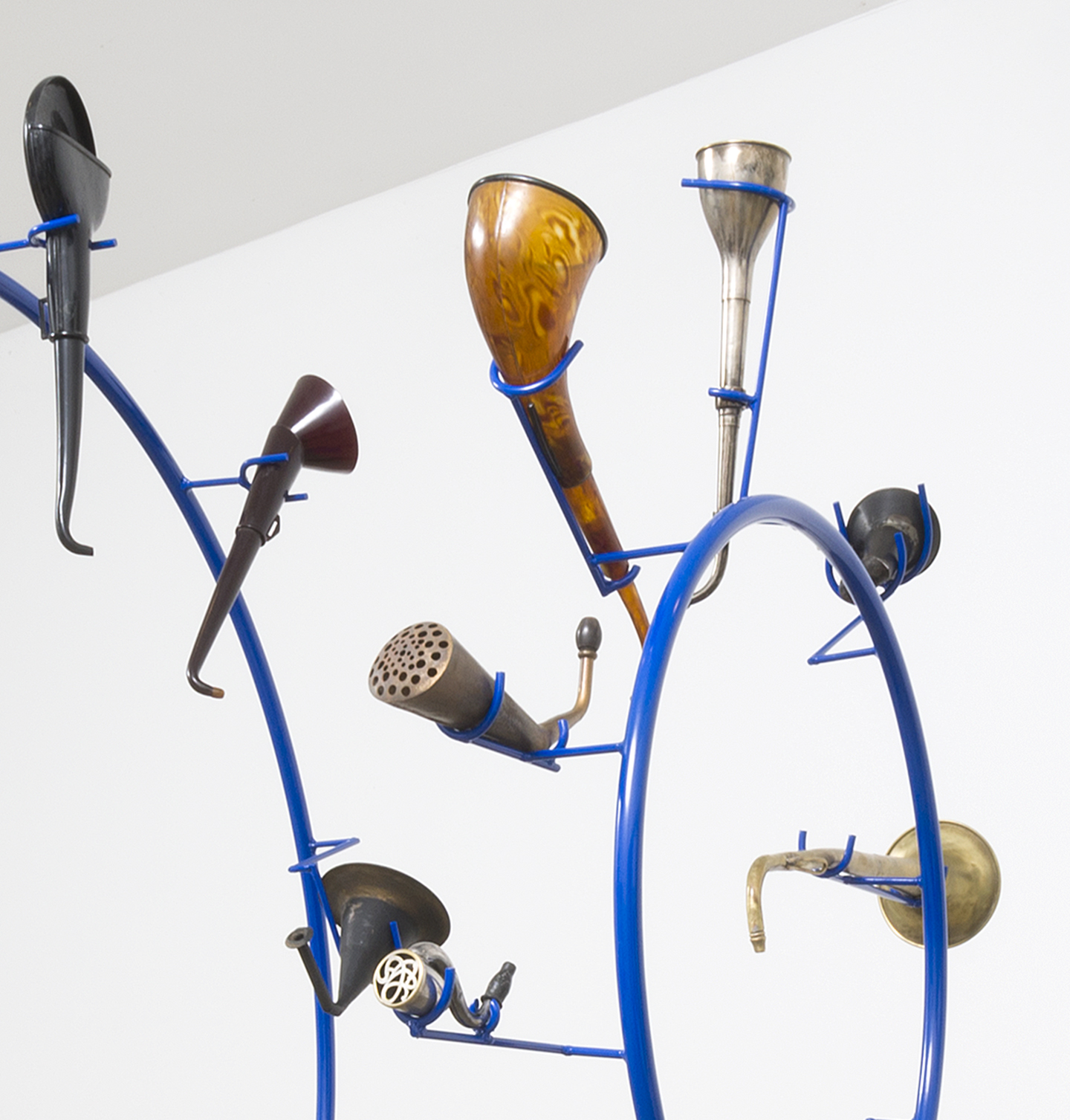
Q?: Favorite Sound: As an artist who often works with sound, do you have a favorite sound or auditory memory?
A: This summer, I was on a residency in rural Minnesota at the Minnesota Marine Art Museum. Just before this trip, I had been fitted for my hearing aids, and this was my first time traveling with them. One of the best parts of the trip was my sound walk along the marshes of the Mississippi River, a five-minute trip from my hotel room.
The sounds of the marshes were off the charts. My hearing loss affects my ability to hear mid-frequency sounds, so I had never heard such a beautiful chorus of buzzing, trilling, and chirping sounds of swampy insects and animals. I must have taken at least twenty sound recordings—my mind was lit up with joy.
It’s fitting that I had this experience during my residency because the pieces I exhibited at the Minnesota Marine Art Museum are part of a project called Sounds from the Swamp. It was a chance for me to go physically deeper into the project’s ideas in ways I did not expect. This kind of experience is happening to me all the time with my new hearing aids—I just discovered that my husband of twenty years swears like a sailor under his breath! But the swamp cacophony was truly unforgettable, and I long to return so that I might hear it again.
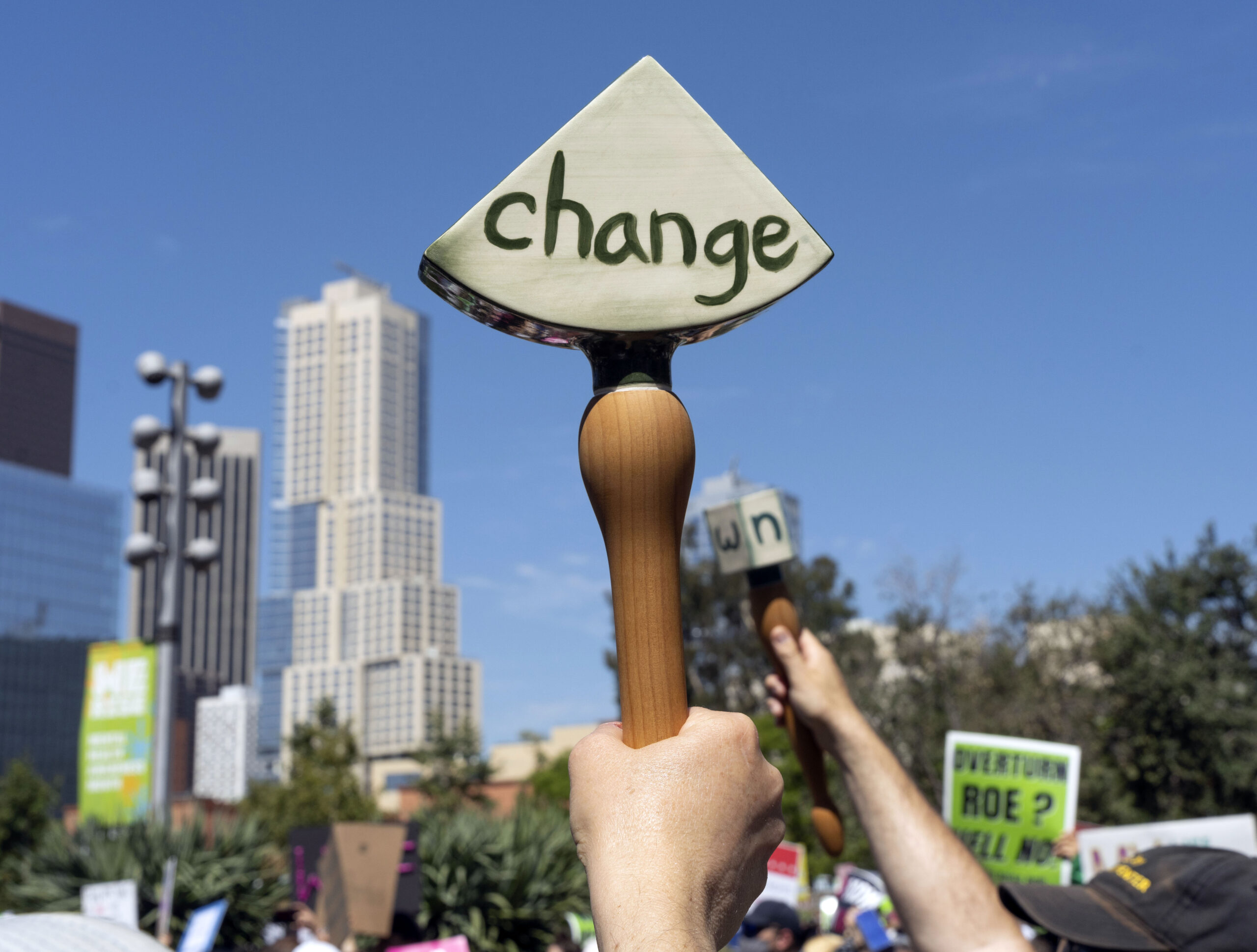
Q?: Audience Interaction: How important is audience interaction in your work, and how do you encourage it? Do you feel it’s intuitive? Do you think there’s a wrong or right way to engage with your work?
A: Participatory artworks have always been a part of my practice: I’ve made sculptures that amplify voices and/or create sound, built sonic architectural structures, and used mirrors that reflect a viewer’s body and mouth. My hearing disability has influenced my drive to create physical, bodily experiences for viewers, often involving the sensations of sound. I cannot control how audiences will interact with my work, and I always approach these participatory pieces with deep curiosity about how people will engage. This allows me to conduct real-time research; as I observe how people interact with my work, I come up with new ideas. For example, I made my first hearing aid—a sculpture called a “histophone” — for a commission from the Getty Villa called Villa Murmurs (2014). I designed these objects to facilitate the sonic exploration of the museum. During the listening workshop, I witnessed how one participant used the sculpture as a megaphone, a way I never would have imagined. This inspired my piece Call to Arms (2016), which I have been using for the past eight years in performances, protests, and collaborative projects.
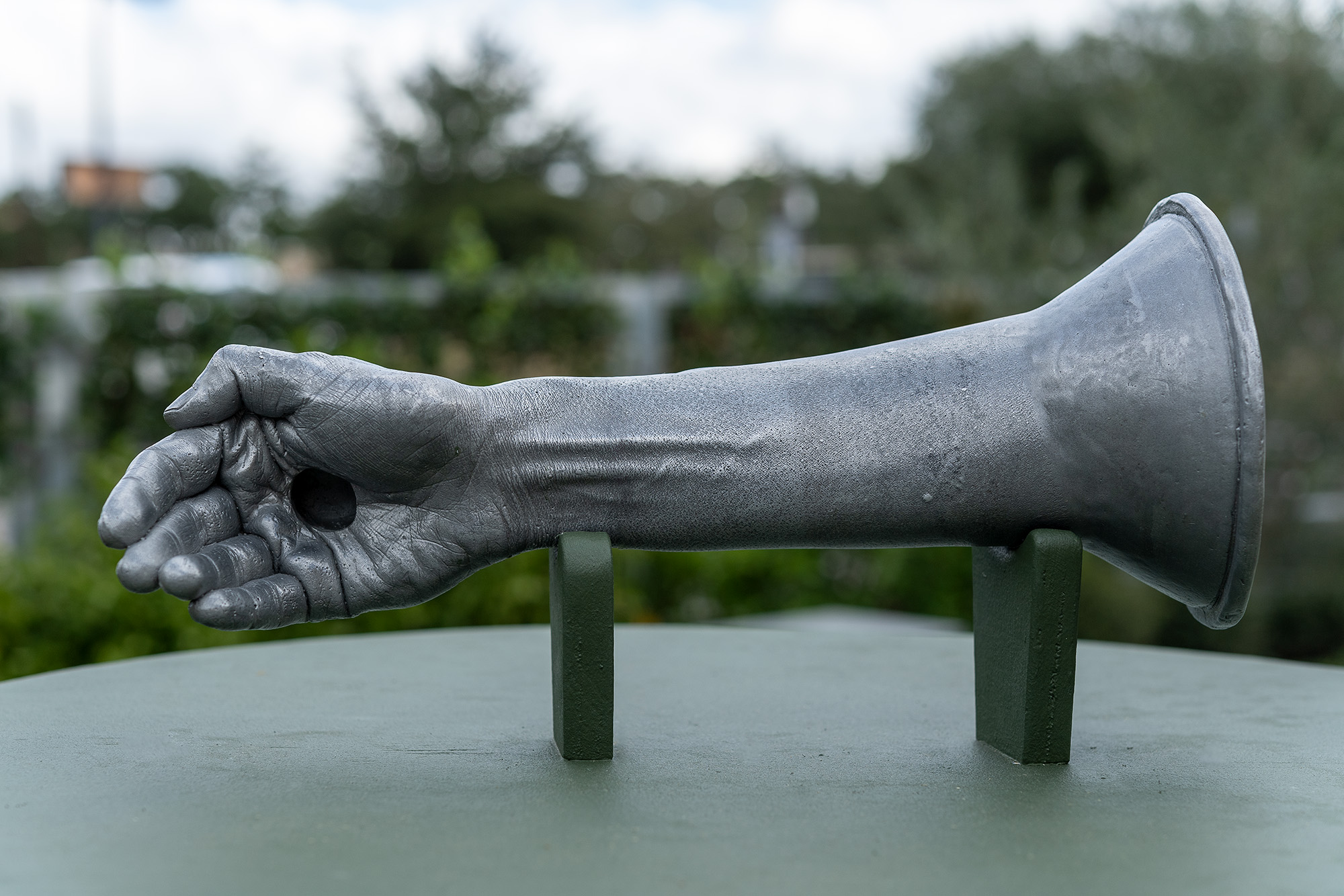
Q?: Artistic Evolution: How has your artistic style or focus evolved over the years?
A: It’s funny because I look at past work and think: “I am just doing the same thing, over and over.” I know many artists have similar experiences—your work continues to unfold over your lifetime, like peeling an onion. A few life changes have really altered my work, though. Early in my career, I was working predominantly with performance and video, alongside producing large-scale collaborative pieces with others. Becoming a mom really shifted my capacity to create this kind of work. My time is so compressed, I am physically exhausted, and I yearn for time alone. Although I still work performatively and collaboratively, making objects and images has become an increasing source of solace for me over the past decade.
More recently, my artwork has started to incorporate more and more text. This is influenced by my encounters with changes in communication technology, AI, social media, and a deep internal feeling that I am losing my grasp of language. Perhaps this is also impacted by my increased hearing loss. Regardless, I am noticing a strong desire to write and use letters and words in my art practice.
Q?: Playful Projects: Have you ever created a piece purely for fun or experimentation? What was it? Do you think experimentation is an important part of your practice? Has it led to any breakthroughs?
A: All of my work emerges from processes of play and experimentation. Recently, I had the opportunity to work for free in a shop that does prototyping for start-ups. They have all kinds of high-tech machines —laser cutters, water jets, CNC machines, mills, and more. I had never used any of them, so I began to experiment with a laser jet machine. I programmed the machine to cut out text (sayings I had written, heard, or misheard) from paper, acrylic, and wood. I wasn’t quite sure what to do with these pieces, so I stuffed a bunch of them in the back of my car. Whenever I had a free minute, I would look at them or take them out to play with. One day, while waiting at a park to meet someone, I brought these pieces out and started experimenting with how they intercepted the sunlight, using the cut-out text to cast shadows on the pavement. This is how my current body of work, Shadow Poems (2024), was born.
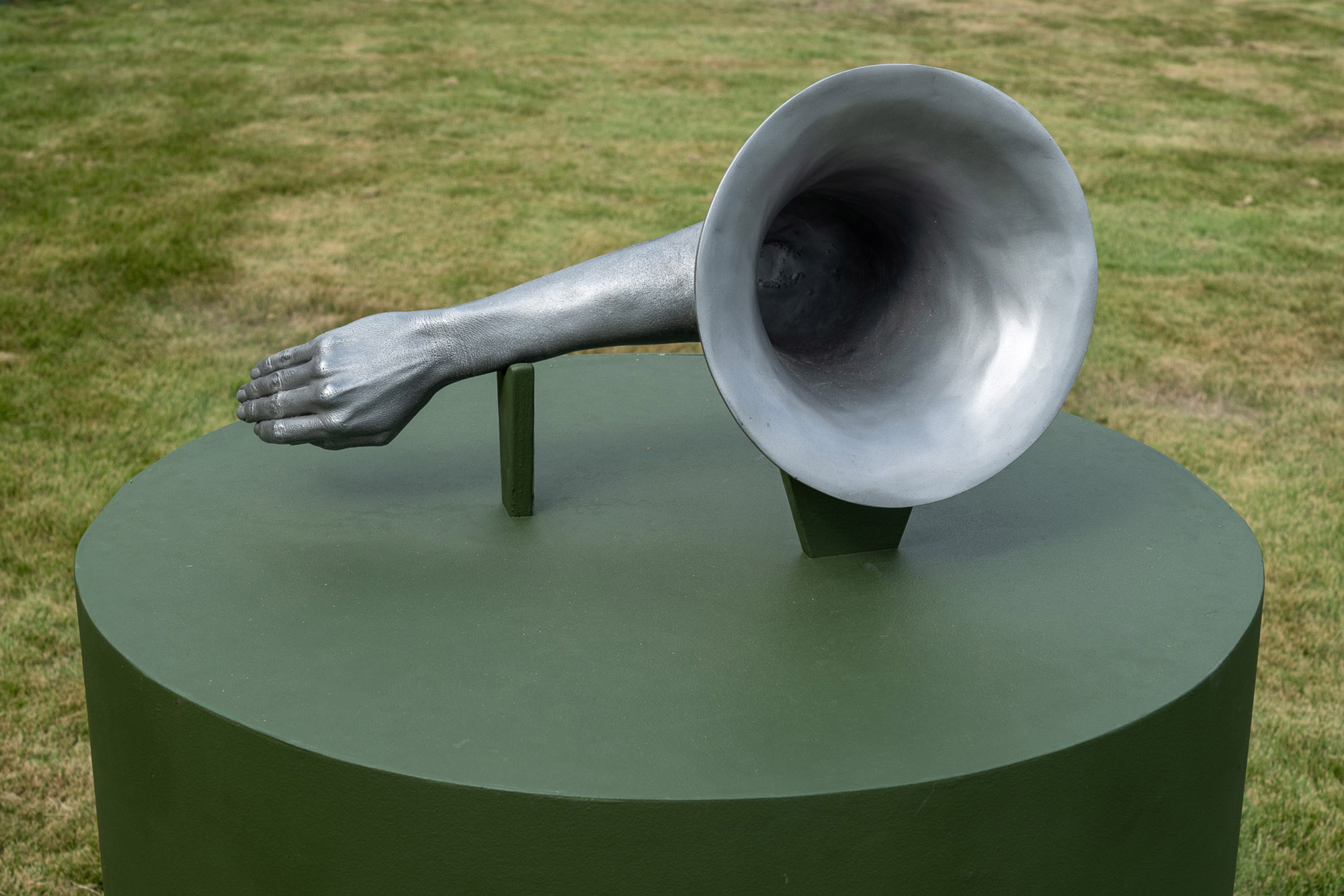
Q?: Creative Inspiration: What non-artistic sources— books, music, films, nature—have inspired your work?
A: Some literary inspirations include: Braiding Sweetgrass, by Robin Wall Kimmerer; Pleasure Activism: The Politics of Feeling Food and Emergent Strategy: Shaping Change, Changing Worlds, by Adrienne Maree Brown; and Doppleganger: A trip into the Mirror World, by Naomi Klein. As far as music, I enjoy work by the composers Kate Soper, Raven Chacon, Sarah Hennies, Caroline Shaw and Pauline Oliveros. Activism is also a critical part of my practice and I’ve found inspiration from The Occupy Movement, #Metoo movement, Extinction Rebellion, The Movement for Black Lives, and The Bread and Puppet Theater. Even hiking in the San Gabriel Foothills and playing with my kids are great sources.
Q?: Public Art: How do you view the role of public art in communities? Can you share an example of a public art project you’ve been involved in and its impact on the community?
A: In 2013, I was invited by Side Street Projects —a community-based arts organization—to create a temporary public artwork at their headquarters in Northwest Pasadena. This part of Pasadena has been historically underserved and underrepresented. At that time, most of the Northwestern Pasadena population lived under the poverty level, with the majority of residents being immigrant and undocumented families. The project I created, called Listening as (a) Movement, focused on amplifying community voices through public artworks and events. I built three large-scale sonic sculptures in an open lot and collaborated with local groups for over a year to host a series of community events. This was deep, relationship-building work that expanded on the foundation of trust Side Street Projects had been nurturing for years. I attended neighborhood council meetings, reached out to every non-profit within a ten-to-fifteen-mile radius, and listened to the needs and concerns of individual stakeholders.
As a direct result of the project, new safety infrastructure (more street lamps!) was installed—something the neighborhood council had been trying to implement for years. The city also increased youth programming for Northwestern Pasadena, and Side Street Projects adjusted the way it commissioned future artworks. One of the project’s main participants, who was a teenager at the time, now works for the City of Pasadena as a planner.
Honestly, I am still amazed and proud of all the positive effects Listening as (a) Movement had on the neighborhood. When given the right support, partnership, and time to move at the speed of trust, community-based artwork can have that power. At the same time, I don’t expect or even want all my artworks to be functional or have quantifiable effects. If I did, I would stop being an artist and become a social worker, a community organizer, or a city planner. Poetry and mystery would be replaced by mission.
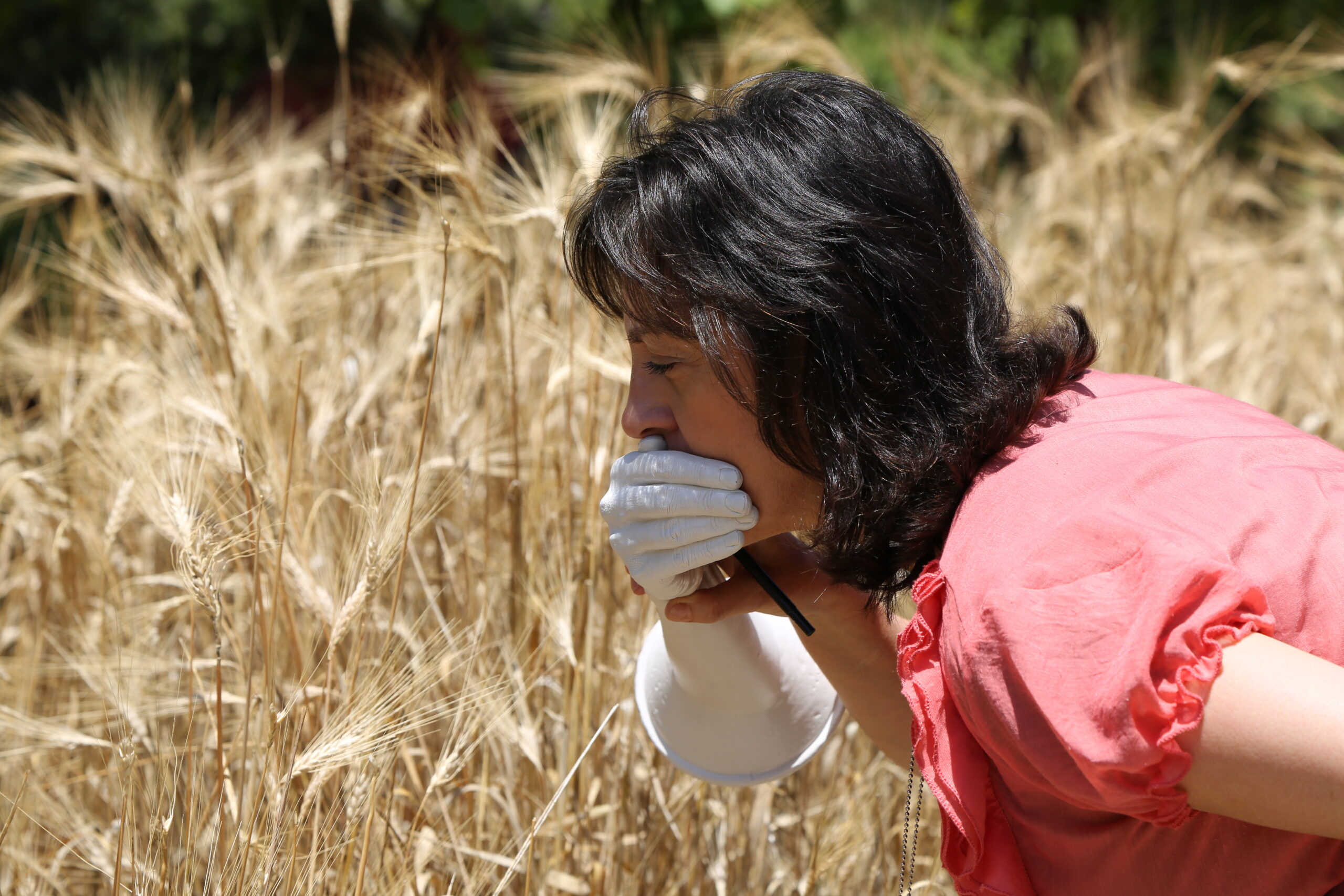
Q?: Career Advice: Can you describe a moment in your career when someone’s help was indispensable to your current success? With that moment in mind, what advice would you give to aspiring artists? What was the best advice you received?
A: When I was ten, I met the artist José Clemente Orozco Farías, the grandson of the Mexican muralist José Clemente Orozco. Clemente (as he was known) was my summer camp counselor and the first professional artist I had ever met. He was full of warmth and schemes for artworks and pranks that he pulled off in collaboration with the older campers. I idolized him and thought he was a genius. We stayed in touch until his passing in 2021. It wasn’t a specific piece of advice Clemente gave me per se, but just witnessing how he lived his life—with curiosity, openness and joy— that I took as a model for how I wanted to be when I grew up.
Art is a tough career path, especially for women artists and quadruple that for moms. Although I graduated from art school at the top of my class, my college mentor actively discouraged me from continuing on as a professional artist. At that stage of my life, I had very few role models. Last year, I was commissioned by artist Gala Porras-Kim to write a letter to young women artists for a project at REDCAT as part of “The Feminist Art Program (1970-1975): Cycles of Collectivity.” I imagined the advice I wanted to give myself when I was young and here is what I wrote (in shortened form) below:
Ten Tips for Young Womxn Artists
1. Find your coven
2. It must change
3. Say “no” early and often
4. Nurture patience
5. Guard over your studio time zealously
6. You are not a cow
7. Welcome fallow times
8. Mother earth cares for us and we must care for her in return
9. Look within, not without
10. You are not alone
Q?: Relationships: Can you tell us about some of the important relationships you’ve forged over the years, and how they’ve been mutually beneficial?
Community is everything and keeps me afloat. I want to take this opportunity to give a big shout-out and massive love to the artists whose friendship has been so important to me in this period of coming to terms with my disability: Alison O’Daniel, Gabie Strong, Debra Scacco and Audra Woloweic. The intimate and frank conversations I have with these four women have grounded me. Their artworks and the ways they navigate the world—each in their own unique way—inspire me and everyone they touch.
A: Art Collection: We hear that you also collect art. Can you tell us about your collection, and why you feel it’s important to collect?
I collect art every chance I can. The pleasure of living with art you love cannot be understated. The artworks up in my home are more than merely decoration; they are spaces to think, objects that offer comfort, things that make me laugh, and bring me moments of deep feeling.
I have a large collection of works by two of my close friends, John Burtle and Audrey Chan. In our living room, we have paintings by Anoka Faruqee, my graduate school mentor. More recently, I acquired a gorgeous work on paper by Patricia Yossen that I still need to frame.
I love to support working artists who are hustling every day to survive and thrive—especially ones that are dear to my heart.
Q?: The Dream Exhibition: If you could exhibit your work anywhere in the world, where would it be and why?
A: For the past year, I have been dreaming of a collaborative project with Japanese and Japanese American artists that would take place in Los Angeles and Los Alamos (USA) alongside Hiroshima and Nagasaki (Japan). This project would be an excavation of a heavy family legacy: my grandfather, Dr. Leonard Pepkowitz, was a chemist who worked for the Manhattan Project and assisted in inventing the nuclear bomb. In my tradition (Judaism), you can always do repair work, even for events that happened hundreds or thousands of years ago. I feel called to do restorative work around the massive destruction that Grandpa Len helped to unleash, and I hope to start work on this project in the near future.
Q?: The Pipeline: Please share with our readers where they can see your work and let us know about any upcoming or current projects.
A: I am currently part of an exhibition titled A Nation Takes Place at the Minnesota Marine Art Museum in Winona, MN, curated by Tia Simone-Gardner and Shana M. Griffin. The show explores race, water, and the founding of the United States, presenting critical new narratives that provide vital antidotes to the rise of fascism, racism, ecocide and white supremacy in our country.
A Nation Takes Place
curated by Tia Simone-Gardner and Shana M. Griffin
August 21, 2024 – March 2, 2025
MMAM (Minnesota Marine Art Museum)
Winona, MN
I am also participating in WILD UP!’s Democracy Sessions project at the Museum of Contemporary Art, Los Angeles, which opens this week and runs from November 8-10. This multi-dimensional project examines the nature of democracy, and I was commissioned to create a score for a ‘zine produced in tandem with live performances and other events.
WILD UP!’s Democracy Sessions
November 8-10, 2024
MOCA (Museum of Contemporary Art)
Los Angeles, CA
In March 2025, I will be presenting a show of new works called Shadow Poems II at AOC F58 Galleria Bruno Lisi in Rome, Italy, curated by Camilla Boemio. The exhibition will include new photographs and sculptures, as well as a community-based project with migrants who are seeking refuge in Rome.
Shadow Poems II
curated by Camilla Boemio
Opening March 2025
Rome, Italy
The ART[MEMO] editorial team would like to thank Elana Mann for taking the time to share her incredible story and discuss her work.
To learn more about Elana Mann you can visit her website at www.elanamann.com and follow her on Instagram @elanamamma.




